1,3-Benzodioxole
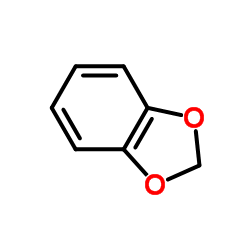
1,3-Benzodioxole structure
|
Common Name | 1,3-Benzodioxole | ||
|---|---|---|---|---|
| CAS Number | 274-09-9 | Molecular Weight | 122.121 | |
| Density | 1.2±0.1 g/cm3 | Boiling Point | 173.0±15.0 °C at 760 mmHg | |
| Molecular Formula | C7H6O2 | Melting Point | -18 °C | |
| MSDS | Chinese USA | Flash Point | 55.0±0.0 °C | |
| Symbol |

GHS07 |
Signal Word | Warning | |
| Name | 1,3-benzodioxole |
|---|---|
| Synonym | More Synonyms |
| Density | 1.2±0.1 g/cm3 |
|---|---|
| Boiling Point | 173.0±15.0 °C at 760 mmHg |
| Melting Point | -18 °C |
| Molecular Formula | C7H6O2 |
| Molecular Weight | 122.121 |
| Flash Point | 55.0±0.0 °C |
| Exact Mass | 122.036781 |
| PSA | 18.46000 |
| LogP | 2.08 |
| Vapour Pressure | 1.7±0.3 mmHg at 25°C |
| Index of Refraction | 1.558 |
| Storage condition | -20°C |
| Water Solubility | 0.2 g/100 mL (25 ºC) |
Synonym: 1,2-(Methylenedioxy)benzene; 1,3-Dioxaindane SECTION 2 - COMPOSITION, INFORMATION ON INGREDIENTS
Risk Phrases: 10 22 SECTION 3 - HAZARDS IDENTIFICATION EMERGENCY OVERVIEW Flammable. Harmful if swallowed. Potential Health Effects Eye: May cause chemical conjunctivitis and corneal damage. Skin: May cause irritation and dermatitis. May cause cyanosis of the extremities.
Ingestion: May cause gastrointestinal irritation with nausea, vomiting and diarrhea. Ingestion of large amounts may cause CNS depression. Inhalation: Aspiration may lead to pulmonary edema. Vapors may cause dizziness or suffocation. May cause burning sensation in the chest. Chronic: No information found. SECTION 4 - FIRST AID MEASURES Eyes: Flush eyes with plenty of water for at least 15 minutes, occasionally lifting the upper and lower eyelids. Immediately flush eyes with plenty of water for at least 15 minutes, occasionally lifting the upper and lower eyelids. Get medical aid immediately. Skin: Get medical aid. Flush skin with plenty of water for at least 15 minutes while removing contaminated clothing and shoes. Remove contaminated clothing and shoes. Ingestion: If victim is conscious and alert, give 2-4 cupfuls of milk or water. Get medical aid immediately. Do NOT induce vomiting. If conscious and alert, rinse mouth and drink 2-4 cupfuls of milk or water. Inhalation: Get medical aid immediately. Remove from exposure and move to fresh air immediately. If not breathing, give artificial respiration. If breathing is difficult, give oxygen. Notes to Physician: SECTION 5 - FIRE FIGHTING MEASURES General Information: As in any fire, wear a self-contained breathing apparatus in pressure-demand, MSHA/NIOSH (approved or equivalent), and full protective gear. Vapors may form an explosive mixture with air. Vapors can travel to a source of ignition and flash back. Will burn if involved in a fire. Use water spray to keep fire-exposed containers cool. Containers may explode in the heat of a fire. Flammable liquid and vapor. Vapors may be heavier than air. They can spread along the ground and collect in low or confined areas. Extinguishing Media: For small fires, use dry chemical, carbon dioxide, water spray or alcohol-resistant foam. For large fires, use water spray, fog, or alcohol-resistant foam. Use water spray to cool fire-exposed containers. Water may be ineffective. Use agent most appropriate to extinguish fire. Do NOT use straight streams of water. SECTION 6 - ACCIDENTAL RELEASE MEASURES General Information: Use proper personal protective equipment as indicated in Section 8. Spills/Leaks: Absorb spill with inert material (e.g. vermiculite, sand or earth), then place in suitable container. Clean up spills immediately, observing precautions in the Protective Equipment section. Remove all sources of ignition. Use a spark-proof tool. A vapor suppressing foam may be used to reduce vapors. SECTION 7 - HANDLING and STORAGE Handling: Wash thoroughly after handling. Ground and bond containers when transferring material. Use spark-proof tools and explosion proof equipment. Avoid contact with eyes, skin, and clothing. Empty containers retain product residue, (liquid and/or vapor), and can be dangerous. Keep container tightly closed. Keep away from heat, sparks and flame. Avoid ingestion and inhalation. Do not pressurize, cut, weld, braze, solder, drill, grind, or expose empty containers to heat, sparks or open flames. Storage: Keep away from heat, sparks, and flame. Keep away from sources of ignition. Store in a cool, dry, well-ventilated area away from incompatible substances. Flammables-area. SECTION 8 - EXPOSURE CONTROLS, PERSONAL PROTECTION Engineering Controls: Use adequate general or local exhaust ventilation to keep airborne concentrations below the permissible exposure limits. Use process enclosure, local exhaust ventilation, or other engineering controls to control airborne levels. Use adequate general or local explosion-proof ventilation to keep airborne levels to acceptable levels. Exposure Limits CAS# 274-09-9: Personal Protective Equipment Eyes: Wear safety glasses and chemical goggles if splashing is possible. Skin: Wear appropriate protective gloves to prevent skin exposure. Clothing: Wear appropriate protective clothing to prevent skin exposure. Respirators: A respiratory protection program that meets OSHA's 29 CFR 1910.134 and ANSI Z88.2 requirements or European Standard EN 149 must be followed whenever workplace conditions warrant respirator use. Wear a NIOSH/MSHA or European Standard EN 149 approved full-facepiece airline respirator in the positive pressure mode with emergency escape provisions. SECTION 9 - PHYSICAL AND CHEMICAL PROPERTIES Physical State: Liquid Color: clear slightly yellow Odor: None reported. pH: Not available. Vapor Pressure: 12 mmHg @ 25 C Viscosity: Not available. Boiling Point: 172.0 - 173.0 deg C @ 760.00m Freezing/Melting Point: -18.00 - -0.00 deg C Autoignition Temperature: Not available. Flash Point: 55 deg C ( 131.00 deg F) Explosion Limits, lower: Not available. Explosion Limits, upper: Not available. Decomposition Temperature: Solubility in water: 0.2% (25 c) Specific Gravity/Density: 1.0640g/cm3 Molecular Formula: C7H6O2 Molecular Weight: 122.12 SECTION 10 - STABILITY AND REACTIVITY Chemical Stability: Stable under normal temperatures and pressures. Conditions to Avoid: Incompatible materials, ignition sources, excess heat, strong oxidants. Incompatibilities with Other Materials: Strong oxidizing agents. Hazardous Decomposition Products: Carbon monoxide, irritating and toxic fumes and gases, carbon dioxide. Hazardous Polymerization: Has not been reported. SECTION 11 - TOXICOLOGICAL INFORMATION RTECS#: CAS# 274-09-9: DA5600000 LD50/LC50: CAS# 274-09-9: Oral, mouse: LD50 = 1220 mg/kg; Oral, rat: LD50 = 580 mg/kg. Carcinogenicity: 1,3-Benzodioxole - Not listed by ACGIH, IARC, or NTP. Other: See actual entry in RTECS for complete information. SECTION 12 - ECOLOGICAL INFORMATION Other No information available. SECTION 13 - DISPOSAL CONSIDERATIONS Dispose of in a manner consistent with federal, state, and local regulations. SECTION 14 - TRANSPORT INFORMATION IATA Shipping Name: FLAMMABLE LIQUID, N.O.S. Hazard Class: 3 UN Number: 1993 Packing Group: III IMO Shipping Name: FLAMMABLE LIQUID, N.O.S. Hazard Class: 3.3 UN Number: 1993 Packing Group: III RID/ADR Shipping Name: FLAMMABLE LIQUID, N.O.S. Hazard Class: 3 UN Number: 1993 Packing group: III SECTION 15 - REGULATORY INFORMATION European/International Regulations European Labeling in Accordance with EC Directives Hazard Symbols: XN Risk Phrases: R 10 Flammable. R 22 Harmful if swallowed. Safety Phrases: S 9 Keep container in a well-ventilated place. S 16 Keep away from sources of ignition - No smoking. S 33 Take precautionary measures against static discharges. WGK (Water Danger/Protection) CAS# 274-09-9: No information available. Canada CAS# 274-09-9 is listed on Canada's NDSL List. CAS# 274-09-9 is not listed on Canada's Ingredient Disclosure List. US FEDERAL TSCA CAS# 274-09-9 is listed on the TSCA inventory. SECTION 16 - ADDITIONAL INFORMATION MSDS Creation Date: 9/02/1997 Revision #4 Date: 3/18/2003 The information above is believed to be accurate and represents the best information currently available to us. However, we make no warranty of merchantability or any other warranty, express or implied, with respect to such information, and we assume no liability resulting from its use. Users should make their own investigations to determine the suitability of the information for their particular purposes. In no way shall the company be liable for any claims, losses, or damages of any third party or for lost profits or any special, indirect, incidental, consequential or exemplary damages, howsoever arising, even if the company has been advised of the possibility of such damages. SECTION 16 - ADDITIONAL INFORMATION N/A |
CHEMICAL IDENTIFICATION
HEALTH HAZARD DATAACUTE TOXICITY DATA
|
| Symbol |

GHS07 |
|---|---|
| Signal Word | Warning |
| Hazard Statements | H302 + H332 |
| Personal Protective Equipment | Eyeshields;Faceshields;full-face respirator (US);Gloves;multi-purpose combination respirator cartridge (US);type ABEK (EN14387) respirator filter |
| Hazard Codes | Xn:Harmful |
| Risk Phrases | R10;R22 |
| Safety Phrases | S23-S24/25-S36/37/39-S26-S16 |
| RIDADR | UN 1993 3/PG 3 |
| WGK Germany | 3 |
| RTECS | DA5600000 |
| Packaging Group | III |
| Hazard Class | 3 |
| HS Code | 29329970 |
| Precursor 10 | |
|---|---|
| DownStream 10 | |
| HS Code | 2932999099 |
|---|---|
| Summary | 2932999099. other heterocyclic compounds with oxygen hetero-atom(s) only. VAT:17.0%. Tax rebate rate:13.0%. . MFN tariff:6.5%. General tariff:20.0% |
|
Smooth photocatalytic preparation of 2-substituted 1,3-benzodioxoles.
Chemistry 17(2) , 572-9, (2011) A mild and general method for the synthesis of potentially bioactive 2-substituted-1,3-benzodioxoles is presented. This is based on the photocatalyzed activation of methylene hydrogen atoms in the pre... |
|
|
Computer graphics analysis of the interaction of alkoxy methylenedioxybenzenes with cytochromes P4501.
Toxicol. Lett. 76(1) , 39-45, (1995) A quantitative structure-activity relationship (QSAR) in a homologous series of alkoxy methylenedioxybenzenes (MDBs) is reported. Measurements of molecular dimensions from computer-generated space-fil... |
|
|
Synthesis and cytotoxicity of podophyllotoxin analogues modified in the A ring.
Eur. J. Med. Chem. 38(1) , 65-74, (2003) Several podophyllotoxin derivatives lacking the methylenedioxy group or with different functionalization of the A-ring of the cyclolignan skeleton have been prepared and evaluated for their cytotoxic ... |
| MFCD00005818 |
| EINECS 205-992-0 |
| Methylenedioxy benzene |
| 1,3-Benzodioxole |
| 1,2-Methylenedioxybenzene |
| 3,4-Methylenedioxybenzene |
| T56 BO DO CHJ |
| Benzo[d][1,3]dioxole |
| 1,2-(Methylenedioxy)benzene |
| 1,3-benzodioxolan |
| Methylenedioxybenzene |
| 1,3-Dioxindan |
| 1,3-Dioxaindan |
| Benzodioxole |
| Paroxetine Impurity 12 |
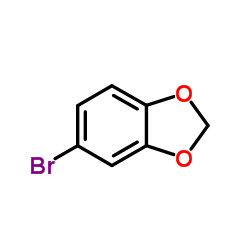 CAS#:2635-13-4
CAS#:2635-13-4 CAS#:75-09-2
CAS#:75-09-2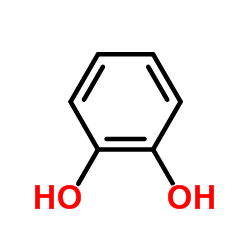 CAS#:120-80-9
CAS#:120-80-9 CAS#:7228-38-8
CAS#:7228-38-8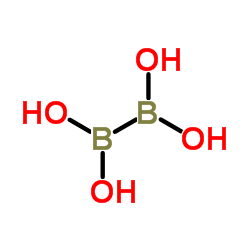 CAS#:13675-18-8
CAS#:13675-18-8 CAS#:5876-51-7
CAS#:5876-51-7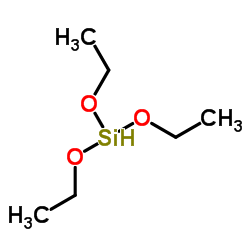 CAS#:998-30-1
CAS#:998-30-1 CAS#:95-93-2
CAS#:95-93-2 CAS#:74-97-5
CAS#:74-97-5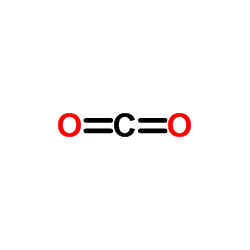 CAS#:124-38-9
CAS#:124-38-9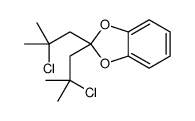 CAS#:110614-13-6
CAS#:110614-13-6![Benzo[d][1,3]dioxole-4-carboxylic acid structure](https://www.chemsrc.com/caspic/078/5768-39-8.png) CAS#:5768-39-8
CAS#:5768-39-8 CAS#:5279-32-3
CAS#:5279-32-3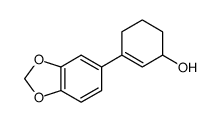 CAS#:141090-98-4
CAS#:141090-98-4![5,6-bis[(6-bromo-1,3-benzodioxol-5-yl)methyl]-1,3-benzodioxole structure](https://www.chemsrc.com/caspic/069/141100-51-8.png) CAS#:141100-51-8
CAS#:141100-51-8![8-(BENZO[D][1,3]DIOXOL-5-YL)-1,4-DIOXASPIRO[4.5]DECAN-8-OL structure](https://www.chemsrc.com/caspic/029/150019-56-0.png) CAS#:150019-56-0
CAS#:150019-56-0 CAS#:94838-82-1
CAS#:94838-82-1![2-(Benzo[d][1,3]dioxol-4-yl)-4,4,5,5-tetramethyl-1,3,2-dioxaborolane structure](https://www.chemsrc.com/caspic/067/1073339-10-2.png) CAS#:1073339-10-2
CAS#:1073339-10-2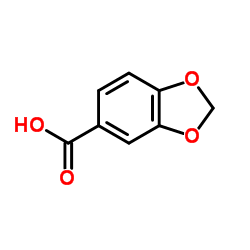 CAS#:94-53-1
CAS#:94-53-1
